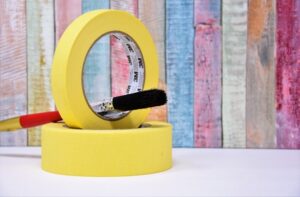DIY Painting Tips

Interior painting is probably the most common update that homeowners make themselves. Even if you have never painted before, with the right supplies and some effort, you can update the paint in your home without being overwhelmed. Here are some basic tips if you want to tackle this project on your own without having to pay a professional to repaint when you are through.
- Buy the right supplies and don’t skimp on them. You can’t expect a professional looking paint job if your supplies are of poor quality. If you aren’t sure what you need, ask when you purchase your paint.
- Take the time to tape off the area you will be painting. There will be drips and possibly even spills. Don’t let that become a huge mess. Tape off the walls, ceilings or trim that isn’t being painted and put drop cloths on the floor.
- Remove outlet and switch plate covers before painting. After you remove them, tape over the outlets and light switches so you don’t get paint on them.
- Don’t just jump into the painting. Do the necessary research to figure out what kind of prep work your walls will need to make the paint go on smoothly. At a minimum, walls will need a thorough cleaning but they may also require other steps if the walls are damaged or you are covering a dark color or rough texture.
- At a minimum, you will probably have some nail holes that need to be filled in. This can be easily accomplished with a small amount of spackle or caulk. You will then need to let the area dry and sand it smooth. After sanding, you will need to clean the area again to remove any dust.
- If you are painting an area that requires more than one can of paint, it is a good idea to mix the cans together into a larger bucket in case there are slight variations in the color of each can.
- Different types of bristles on paint brushes are used to best apply certain types of paint. For water-based paint, use nylon bristles, natural bristles for oil-based paint and nylon and polyester for latex paint.
- When selecting rollers, match the length of the nap to the type of surface you are painting. Smooth surfaces use a shorter nap while textured surfaces like popcorn ceilings will require a longer nap.
- If you need to do more than one coat, let the first coat dry before you add a second one.
- When you are finished, save your extra paint for touchups. A baby food jar is a great option if you only have a small amount remaining.
- Clean your tools right away when you are finished so that you can save them for another time. If you let the paint dry on them, it will be much more difficult to get the paint off.
Now that you have educated yourself on the process, it’s time to get started if you can decide what color paint you want to use. Start small and take your time. Call me for a local referral to help with your home renovation goals, Pam Snowden 817-690-0976.
Pam Snowden
Realty World Professionals
817-690-0976 (cell)
Image courtesy of capri23auto/pixabay.com

